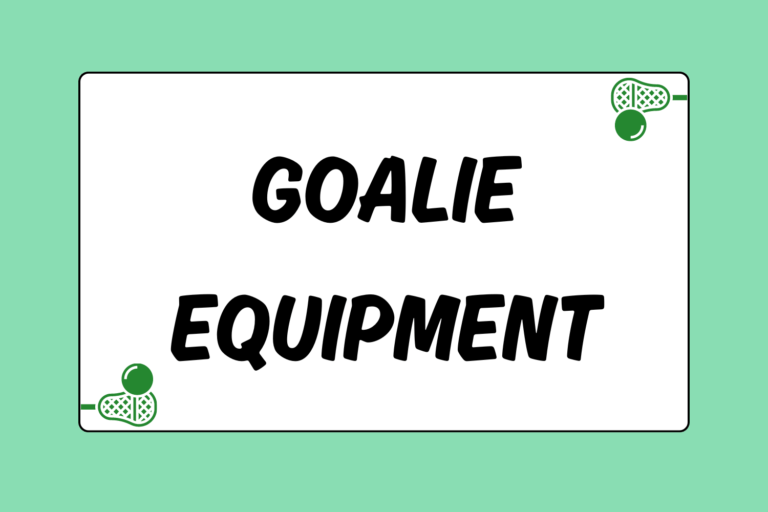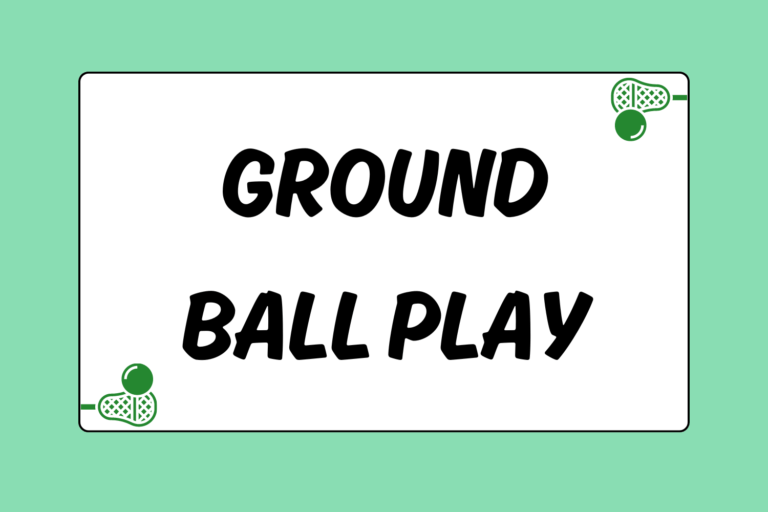With 10 players working together at once on the field, there are many elements crucial to the success of a team. Different positions require different types of players and different approaches to the game. At the end of each section below, we’ll give an example of a player in the MLL who exemplifies each particular role, while trying to stay true to all the positions and players on the field. Here are 10 things that a team needs if it wants to achieve great things on the field…
1. A field general in goal
The goalie must be the vocal leader for the entire defense. He has to be the eyes and ears for other players who don’t have the same vantage point and overall view of the field. Since most defenders have to know where both their man and the ball are at all times, the goalie has to vocalize loudly to keep them aware of everything else that is happening on the defensive end of the field.
A goalie that’s able to take charge on the field will both instill confidence in his teammates, and get under the skin of opponents by being authoritative and just a touch obnoxious. Every team wants a goalie who’s the type that people love to have as a teammate, but hate to play against.
2. Speed on defense
The days of defenders being big, lumbering football players are close to over. As lacrosse players get more and more athletic, attackmen are becoming increasingly fast and generating matchup problems for teams that like to stick the big, slow guys at defense. Teams need to have a defender that is fast enough to keep up with a quick and shifty little attackman. Great teams all have at least one defenseman that is fast enough to pick up a ground ball in the defensive end and run it up the field in transition.
3. Faceoff specialist
Controlling possession is huge in the game of lacrosse. There is a huge psychological disadvantage when a team knows that the guy on the other side of the faceoff X is virtually unbeatable. Teams with a great FOGO (FaceOff-and-Get-Off specialist) know that whenever they get scored on, they’ve got a great shot at getting the ball back and regaining momentum. The best faceoff guys can win the ball forward and create an instant fast break, with the defense being helpless to stop it.
4. Middies that can defend
Having midfielders capable of defending their position can contribute to a team’s success in a few different capacities. First, it takes away the opponent’s ability to initiate offense from the midfield and find the attackmen for finishes around the cage. If a team has a reliable midfield defender guarding the other team’s offensive stud midfielder, they won’t have to slide to him very often, and the long poles can focus on making sure their attackmen don’t get open around the cage for easy goals. Strong defenders at midfield know to force their man down the side and into spots where shooting or feeding are difficult or impossible.
5. Size at midfield
Equally important as having good defenders at midfield is having size there on the offensive end. A big, strong midfielder has the ability to run with the ball, take checks and still be able to free the hands and shoot while a defender is all over him. Size and strength also play into a midfielder’s ability to be a big target on cuts for feeding attackmen. Big midfielders have the ability to see over defenders once they catch the ball and can find the cage for easy shots. The bigger and stronger a player is, the more likely he is to have a hard shot.
6. Role players
No team is full of star players. Too many big egos can quickly derail a team through selfishness and a failure to defer to teammates at the right times. There will always be people on a team that are less talented than others. The key to getting the most out of these players is to make sure they have defined roles, and that they embrace these roles. A role player finds his biggest strength as a player and then finds a role on the team that allows him to maximize that strength. Often times, the less talented players will play with more passion and enthusiasm than players who have tons of talent but little drive to get better.
Less talented but highly energized and motivated players can carve out roles as defensive specialists, FOGOs or even as a guy who’s on the field knowing he should be deferring to teammates in big situations and just looks to keep the game flowing for his team. If a team has players who can embrace these roles and understand that their biggest contributions may come on the practice field by pushing their teammates every day, the team will be in a very good position to succeed come game day.
7. Good dodgers
Offense is always initiated by a player beating his defender one-on-one. A team must have at least two players capable of beating their man with a dodge and forcing the defense to rotate and adjust. Effective dodgers are able to protect the ball against a defender throwing hard checks, while also being ready to pass or shoot at the right time. A good dodger has his head up and his eyes in front at all times.
8. Patience
Unless your team plays MLL rules (60-second shot clock), patience should be exercised in all facets of the game. After a team has been playing defense for a few minutes and it has managed to clear the ball into the offensive end, the team’s offense should be conscious of the fact that the midfielders will need to rest a bit and regain some of the energy they expended on defense. A good way to help the middies here is to work the ball around the outside – this gets the defense to relax a little bit, and lets the midfielders recharge to have enough energy to be effective on offense.
Patience also comes into play offensively when feeding. Players shouldn’t force a pass because they think a teammate might be open, they should pass because a teammate will be open or because he is already open. Forcing passes will result in turnovers and will frustrate the heck out of coaches and teammates alike.
Another instance when patience is key on the field is for a goalie immediately after he makes a save. The goalie should relax for a second or two, and patiently check through his options of where to throw the initial clearing pass. An impatient goalie will quickly fire an outlet pass to a spot where a teammate can’t get to the ball. Even worse, he might run out of the crease with the ball and try to dodge a riding attackman, losing the ball and probably resulting in a garbage goal for the opposition.
9. Quarterback at attack
Every team needs an attackman that can control the flow of the offense and take charge on the field. This player will almost always occupy the “X” position behind the cage, as this is the best spot from which to feed after a dodge. This attackman should be the smartest player out of the three starters, and should know where his teammates are on the field at all times. He should be able to call plays on his own and take charge of the offense in situations when the coach can’t.
10. Finishers
Without capable finishers, all of a team’s discipline and hard work on offense will go to waste. A finisher is someone who has a knack for sticking the open shot in the right place every time. They know when and where to shoot the ball, and will catch the pass and score in a tight spot. Finishers are especially important to a team’s man-up unit. With one less defender on the field, there is more space to operate around the goal, and shots are easier to come by.
The Complete Team
As with any team sport, team success cannot be achieved without all 10 players working as one. Every player on the team must understand and accept his role, and know that everything he does is for the greater good of the team. Cohesion and synergy can take a team from mediocre to great in a very short time.





